Both Sides of the Coin
S.G. Jilanee
Zulfikar Ali Bhutto’s colorful personality and controversial rule has left an indelible mark on Pakistan’s history.
Pakistan’s ninth prime minister and fourth president, Zulfikar Ali Bhutto was as colorful a personality as he was controversial; loved and hated with equal passion. Born on 5 January 1928, he was educated at U.C Berkeley and Oxford University and trained as a barrister at the Lincoln’s Inn. His father, Sir Shahnawaz Bhutto was prime minister of the Indian princely state of Junagadh. His mother, Khursheed Begum was a Hindu convert.
Bhutto entered politics in 1957 as a cabinet member in President Iskander Mirza’s government. When Ayub Khan took over from Mirza in 1958, Bhutto became the youngest Pakistani ever to hold a cabinet post. He held several ministries before he was appointed foreign minister in 1963. However, Bhutto’s relations with Ayub Khan soured after he supported sending infiltrators into Indian occupied Kashmir in Operation Gibraltar. The plan backfired and led to the 1965 war with India, in which Pakistan was severely humiliated. After Ayub signed the Tashkent Agreement with India to end hostilities, the gulf between the two widened. Ultimately, Bhutto was sacked in 1966.
The next year he founded the Pakistan Peoples’ Party (PPP). In the 1970 general elections, the PPP emerged as the majority party in West Pakistan. After East Pakistan seceded in December 1971, Bhutto was offered the presidency by a shell-shocked nation. In 1973, he gave the country a new constitution and became prime minister. In the general elections of 1977, Bhutto’s party swept the polls. The opposition cried “foul,” alleged large scale rigging and took to the streets. In July, the army deposed Bhutto. He was jailed and later hanged on April 4, 1979, after a trial for authorising the murder of a political dissenter, Nawab Mohammad Ahmad Khan.
Bhutto’s achievements are as numerous and shining as his faults are galore and serious. His first major performance as foreign minister was to conclude the Sino-Pakistan boundary agreement on March 2, 1963 under which China ceded 750 square miles of territory to Pakistan. He forged strong ties with China, Saudi Arabia, Indonesia and Libya as well as founded the Regional Cooperation for Development (RCD) with Iran and Turkey.One of Bhutto’s most spectacular achievements was the Simla Agreement of 1972. Barely seven months after becoming president, he secured the release of 93,000 Pakistani prisoners of war and the return of 5,000 square miles of Pakistani territory that India had occupied during the 1971 war, all without any quid pro quo.
In 1973, he gave the country its first consensus constitution. In 1974, he hosted the second Islamic Summit in Lahore. The same year he initiated the country’s nuclear program, after India exploded its first nuclear device, Smiling Buddha. To Bhutto, also goes the credit for holding Pakistan’s First Seerat Conference in 1976.
Among his other gifts to the nation are three major universities: Quaid-e-Azam, Allama Iqbal Open, and Gomal besides the Institute of Theoretical Physics. Bhutto established a large number of rural and urban schools, “including around 6,500 elementary schools, 900 middle schools, 407 high schools, 51 Intermediate Colleges and 21 junior colleges.” Bhutto’s land reforms re-fixed the maximum ceiling for landholding by reducing it from 500 acres to 150 acres of irrigated land and 1000 acres to 300 acres for semi-irrigated land. All lands in excess of 100 acres allocated to government servants was resumed and redistributed. Bhutto also led the foundation of Pakistan’s first and largest steel mill; the country’s second deep sea port at Port Qasim; and inaugurated the first Pakistani atomic reactor. His labor reforms gave more rights and perks to factory workers, such as the scheme for workers’ participation in management.
(To be continued......)







